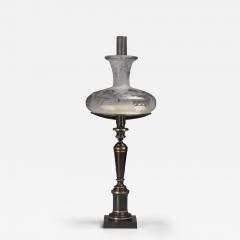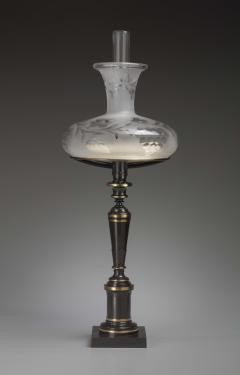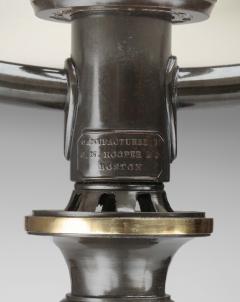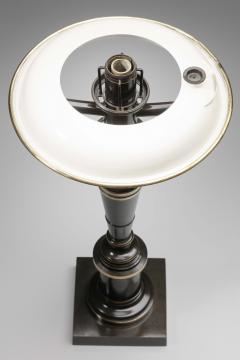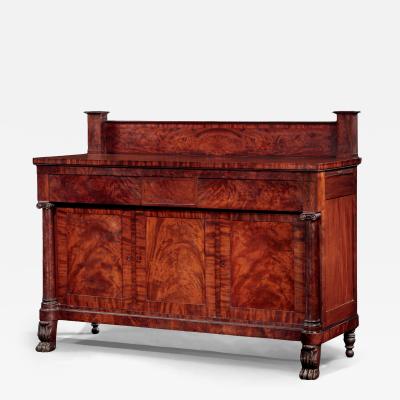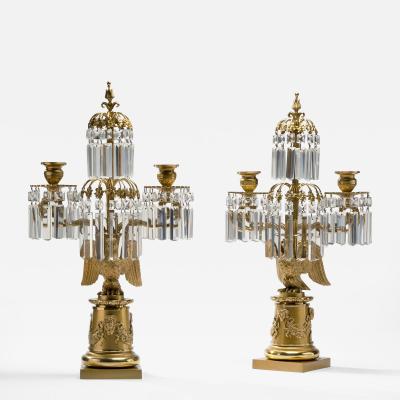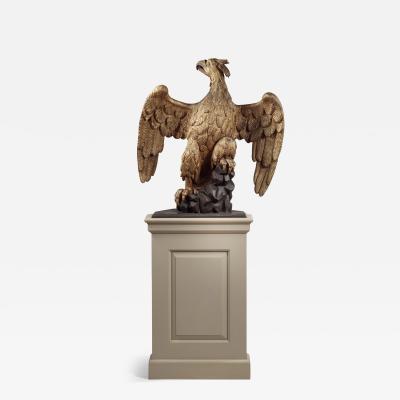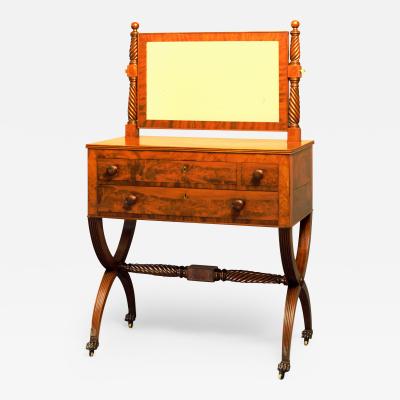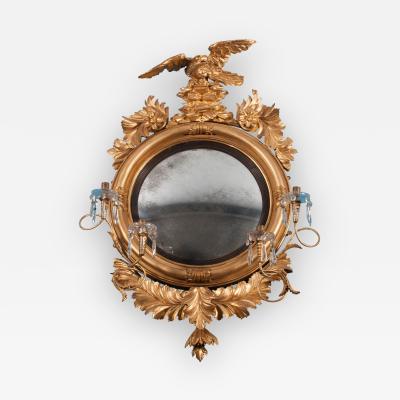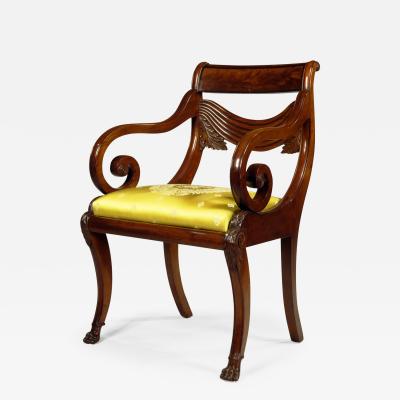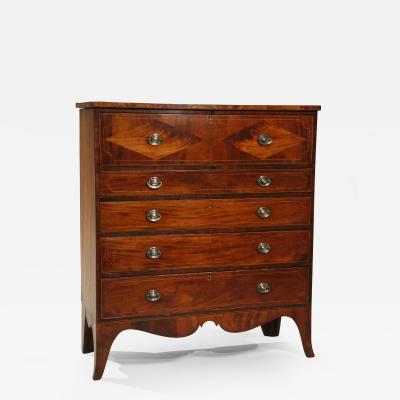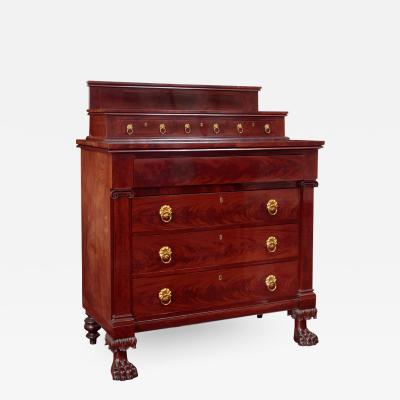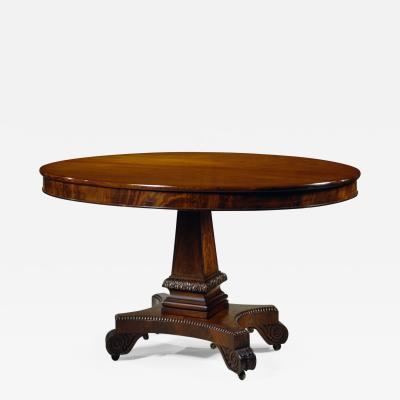Listings / Furniture / Lighting / Table Lamps
Patinated Brass Sinumbra Lamp
-
Description
BRIGHT AND PATINATED LACQUERED BRASS SINUMBRA LAMP
Henry N. Hooper & Co.
Boston, c. 1832-1850
The blown and cut-glass shade over the circular oil font above a patinated standard with burnished rings on a square base. The burner tube bears the label: MANUFACTURED BY/ H. N. HOOPER & CO. / BOSTON. H N HOOPER & Co. BOSTON and the number 17 is cast into the iron base weight, which retains its original paper cover.
In his book 19th Century Elegant Lighting, Gerald T. Gowitt says, "Henry Northey Hooper (1799-1865), of Boston, Massachusetts was already winning awards for metal work in 1817 at the age of eighteen years. He won a gold medal for his exhibit of lamps listed in the catalogue of the Massachusetts [Charitable] Mechanic Association First Exhibition and Fair [in 1837].
Hooper is first listed in the Boston City Directory in 1823 as a mathematical instrument maker; the address is Drawbridge 48 Ann. The 1828 city directory finds Hooper a Boston Copper Company agent and two years later he is described as a "successor" to the late Company.
In 1832, he formed a partnership with William Blake and Thomas Richardson, known as Henry N. Hooper and Company. The firm specialized in metal castings and offered a wide variety of lighting devises, including Argand and Sinumbra lamps and later, solar lamps and gasoliers." Hooper’s factory was on Causeway Street and their store at 24 Commercial Street. Hooper was a manufacturer of brass lighting as well as supplying a broad range of copper and brass products. In addition to manufacturing, Hooper also imported lamps from England which were private-labeled but the marked base weight on this lamp confirms that it is was manufactured in Boston.
Hooper is known to have produced catalogues in 1850 and 1858. This exact lamp base appears in the 1850 catalog as No. 2 and No. 77, which are different heights. It is pictured as a base standard without a burner or shade, as it would have been used for a solar lamp by 1850.
Sinumbra lamps use Argand burners patented in England by Ami Argand in 1784 and differ from Argand lamps only in the design of the oil font, which is in the form of a flatted doughnut encircling the burner rather than off to one side, allowing light to stream directly out and down through the hole onto a table without the font blocking light and casting a shadow, hence sin-umbra, “without shade/shadow.” This improvement on the original Argand design was patented in England by Samuel Parker in 1820. -
More Information
Documentation: Signed Origin: United States, Massachusetts Period: 19th Century Materials: Brass & glass Condition: Good. Excellent: The lamp survives completely intact, including the Argand burner. The metal surface has been restored to its original appearance with a fresh coat of lacquer. The shade may also be the original. The glass chimney is a modern reproduction. Creation Date: 1835-1850 Styles / Movements: Regency, William IV, Traditional Book References: Gerald T. Gowitt, 19th Century Elegant Lighting: Argand, Sinumbra and Solar Lamps (Atglen: Schiffer Publishing Ltd., 2002), 24. Dealer Reference #: L-2406131 Incollect Reference #: 755364 -
Dimensions
H. 24 in; H. 60.96 cm;
Message from Seller:
Welcome to Carswell Rush Berlin Antiques, a premier New York City-based dealer specializing in American antique furniture and decorative accessories from the Classical period (1800-1840). For inquiries, please contact us at 646.645.0404 or email carswellberlin@msn.com.
















